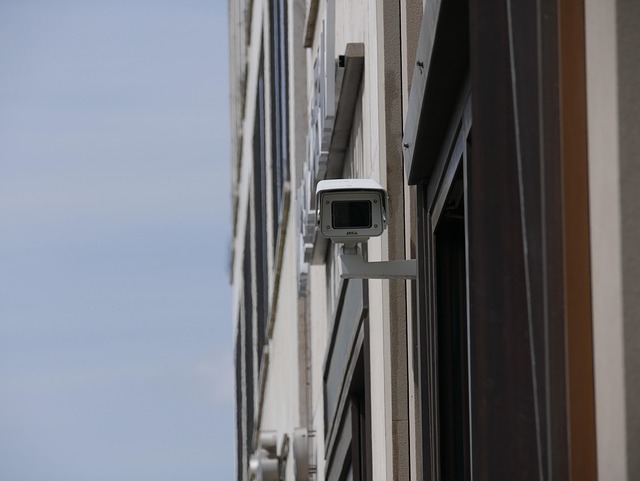License Plate Recognition (LPR) technology enhances business video monitoring by providing real-time vehicle tracking, data analytics, and security improvements. It enables efficient fleet management, automated toll collection, access control, and intelligent traffic monitoring. Despite challenges like weather and privacy, LPR integration promises smarter transportation ecosystems with better operational efficiency and enhanced safety.
“Unlocking the power of license plate recognition (LPR) technology, this article delves into its transformative role in vehicle tracking. From enhancing road safety to optimizing logistics, LPR offers businesses unprecedented insights into their fleets. We explore how integrating this advanced system with existing business video monitoring can create efficient, secure operations. Discover the myriad benefits, from real-time location tracking to improved security measures. Moreover, we analyze challenges and future trends, highlighting the ever-evolving potential of LPR in shaping sustainable transportation.”
Understanding License Plate Recognition Technology
License Plate Recognition (LPR) technology plays a pivotal role in modern vehicle tracking systems, revolutionizing how businesses approach fleet management and security. This cutting-edge technology utilizes advanced image processing algorithms to capture, analyze, and identify vehicle license plates with remarkable accuracy. By integrating LPR into business video monitoring strategies, companies gain a powerful tool for enhancing safety, optimizing operations, and improving overall efficiency.
The process involves capturing high-resolution images of license plates from security cameras or mobile devices, followed by sophisticated character recognition algorithms that decipher the plate numbers. This real-time data enables businesses to track vehicles, monitor parking areas, automate toll collection, and even facilitate intelligent traffic management. With its ability to process vast amounts of vehicle data quickly, LPR technology offers a game-changer solution for various industries, from logistics and transportation to law enforcement and city planning.
Vehicle Tracking: Benefits for Businesses
Vehicle tracking through license plate recognition offers significant advantages for businesses involved in logistics, fleet management, and security. By integrating this technology, companies can enhance their operations in several ways. Firstly, it enables real-time monitoring of vehicle movements, allowing businesses to track assets precisely. This is particularly valuable for managing large fleets, ensuring efficient routes, and optimizing delivery schedules.
Additionally, license plate recognition systems provide comprehensive data analytics, offering insights into driving behavior, fleet utilization, and potential areas of improvement. This data can be leveraged for better decision-making regarding fuel costs, maintenance scheduling, and driver performance. Moreover, such tracking enhances security by facilitating quick response to unauthorized access or theft, thereby reducing risks and improving overall business continuity in the event of vehicle-related incidents.
Integrating LPR into Video Monitoring Systems
Integrating License Plate Recognition (LPR) technology into business video monitoring systems offers immense potential for enhancing security and operational efficiency. This cutting-edge solution allows businesses to capture, analyze, and process vehicle license plate data in real time, providing valuable insights that traditional video surveillance cannot match. By seamlessly incorporating LPR, companies can transform their video monitoring capabilities, enabling automated vehicle identification, access control, and advanced analytics.
For instance, LPR technology can facilitate efficient traffic management by tracking vehicles entering and exiting a premises, automating the entry/exit log process, and alerting authorities in case of unauthorized access. Moreover, it aids in fleet management by providing detailed records of vehicle movements, helping businesses optimize operations, monitor driver behavior, and ensure compliance with regulations. The integration enhances overall security, offering businesses a powerful tool to deter theft, manage parking spaces, and maintain order in dynamic environments.
Challenges and Future Prospects of LPR
License Plate Recognition (LPR) technology, a critical component of vehicle tracking systems, faces several challenges impeding its widespread adoption. Accurately capturing and reading license plates in diverse environments—from varying weather conditions to low-light situations—remains a complex task for computer vision algorithms. Additionally, the vast diversity in plate formats worldwide necessitates continuous updating and adaptation of LPR models, increasing development and maintenance costs. Privacy concerns also pose a significant hurdle, as tracking vehicles and their owners raises ethical questions about data usage and citizen surveillance.
Despite these challenges, the future of LPR appears promising, driven by advancements in artificial intelligence (AI) and computer vision. Improved deep learning algorithms promise higher accuracy rates even under adverse conditions. Integration with business video monitoring systems can offer enhanced security and efficiency, streamlining operations in parking lots, traffic management, and fleet tracking. As technology evolves to address current challenges, LPR is poised to play a pivotal role in shaping smarter, safer transportation ecosystems.
License plate recognition (LPR) technology is transforming vehicle tracking, offering businesses enhanced security and operational efficiency through integrated business video monitoring systems. By leveraging this advanced system, organizations can streamline operations, improve safety, and gain valuable insights from real-time data. While challenges exist, the future of LPR holds great promise for revolutionizing transportation management and urban mobility.
